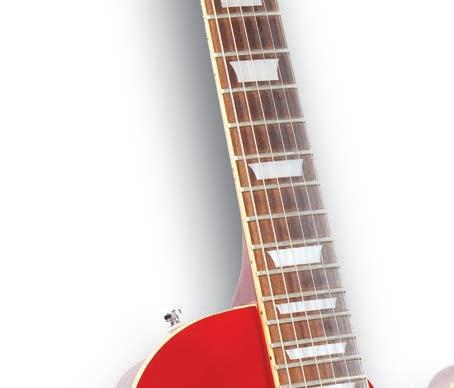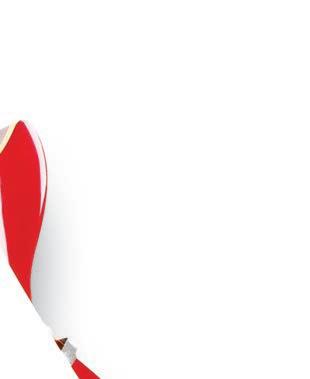
6 minute read
NORTON
intent. I wish we could ignore them and come up with new ones, but the truth is that nasty and troubling words have been around forever, so we will never change those. But maybe we can change our own use of them and our own cadence, tone and frequency of how we use them. We all lose our cool from time to time, I get it. It really just sounds, feels and seems like we are allowing our foul language threshold to slip lower and lower all the time.
“But the human tongue is a beast that few can master. It strains constantly to break out of its cage, and if it is not tamed, it will run wild and cause you grief.” — Unknown
Words we use should be a construction zone, building others up along the way. Building people up with words of hope and encouragement. Beautiful and wonderful words of life that separate us from those who would rather operate through a demolition zone, using words to tear others down, and worse, doing it intentionally.
So, let’s use the rest of this column to focus on what those beautiful and wonderful words of life are, and how we can use them to foster an environment of love, grace, unity and compassion.









I am not sure about you, but this has been a very deliberate and this project does have some iconic status to it, so we want to make sure we’re doing the right thing,” he said.
“Making sure we’re capturing that historic character, but also integrating some best practices in for mobility, urban design and planning and guring out how we prioritize that progress moving forward into the future.” e team had a meeting with the downtown development authority and will have meetings with a group of dozens of stakeholders including Arapahoe Community College, Arapahoe County, South Metro Fire Rescue, the Town Hall Arts Center, Western Welcome Week, city boards and commissions and many more. ere will also be opportunities for public engagement, both virtually and in-person. e rst public meeting will take place virtually on Aug. 30 and an online engagement platform will be available in September. ere will be more meetings, workshops and public reviews as the process continues. e team will use input from meetings and the analyses to create a vision for the project and then intentional movement or change in my own life. I was de nitely a little looser in my language and word choices in the past — anyone reading this knows who I was and also knows who I have become, can validate that. I intentionally keep a word bank, a word bank that is top of mind and heart. A word bank that includes words like love, grace, kindness, gentleness, goodness, mercy, justice, forgiveness, passion, compassion, patience, faith, hope, encouragement, excellence, praiseworthy, joy, happiness, pure, powerful, positive, courage, strength, endurance, gratitude, humility, motivation, inspiration, success and so many more. design more speci c concept plans, accompanied by visual renderings to communicate with the community.
Meredith Wenskoski, the public outreach lead for the project with a rm called Livable Cities Studio, said this process will require building consensus with partners and the community.
“ roughout this entire process, we really work to build trust,” she said.



It’s been said that you can’t trust people who don’t curse. Or, that people who curse are smarter than those who don’t. I am fairly sure both of those were created by someone who loved to curse. How about you, do you feel smarter, funnier, stronger when you use swear words? Or are you a little ashamed or embarrassed at times? I would love to hear your story at gotonorton@gmail.com, and when we can use the beautiful and wonderful words of life instead, it really will be a better than good life.
Michael Norton is an author, a personal and professional coach, consultant, trainer, encourager and motivator of individuals and businesses, working with organizations and associations across multiple industries.
Creating a ‘toolbox’ e team hopes to create what they call a “toolbox,” or a collection of design and infrastructure elements that can be used throughout downtown to create consistency and accomplish various goals.
For example, some options in a green infrastructure toolbox could include electrical vehicle charging stations, planters that collect stormwater and tree canopy incorporation, Reester said.
“Each one of those is not necessarily the right answer in every block of every scenario,” he said. “So what you have in the toolbox is really a palette of choices that can integrate to use in a particular segment of roadway or a particular neighborhood or area to accomplish what you’re trying to.”
Other elements that could be con- sidered for downtown could include curbside design changes, parking options, seating, roadway and bike lane adjustments, new signage or other way nding measures, activated alleys, technology to improve pedestrian safety and more. e team plans to complete their data collection on existing conditions by early September, with visioning and concept designs to happen in the fall and winter. ey hope to make an implementation plan in the spring of 2024, which will outline a prioritized list of projects recommended for phased construction and potential funding sources, Burton wrote in an email to the Littleton Independent.

Once the plan is complete, the project team will submit it to council for approval and begin to make construction documents for Phase 1, likely in the spring of 2024, Burton wrote. She said they anticipate the rst stage of construction to begin in 2025.
BY BELEN WARD BWARD@COLORADOCOMMUNITYMEDIA.COM
ADenver-based nonpro t music education organization is helping local rising stars showcase and enhance their musical talents, record music and learn podcasting for free.
Youth on Record, founded by local musician community organizer Flobots in 2008 works with people aged 14 to 24.
“Flotbots’ mission was to bring music to young people to improve academic success and youth outreach, and it grew into what is now known as Youth on Record,” said Haley Witt, a guitar musician and singer-songwriter who manages Youth on Record.
Youth on Record recently rocked at its ninth annual block party in support of youth in music with over 20 live music performances, teen activities and vendors at its o ce location near downtown Denver.
“We have a state-of-the-art recording studio soundboard and all sorts of instruments,” Witt said. “So young people can drop into our programs and learn about mixing, mastering songs and learn about songwriting and instrumentation.”

After school programs e Youth on Record runs afterschool, out-of-school and in-school programming with Denver Public Schools and Aurora Public Schools middle and high schools.

“We partner with the schools to teach four-credit classes, and we hire local professional artists to teach those classes,” Witt said. “Our Youth on Record teaching artists come to the schools, and the young people are able to learn from them. It’s one way that you nd our Youth on Record programs through the schools.” ere also is an open mic every rst Friday, and it is open to the public, where the youth perform and gain experience in combination with all the First Fridays and art walks across the city, speci cally in collaboration with the Santa Fe Art Walk.
Youth on Record also has afterschool programs at the Youth on Record media studio space called the open lab on Wednesdays, Fridays and Saturdays and is available to young people from 14 to 24 years old.
“It’s self-guided so that they can explore their interests. ey come into the space with a passion for music, making songwriting production, and we teach them the skill set they need to accomplish the projects they’re passionate about,” Witt said.

Witt said Youth on Record also o er an internship and fellowship program and a fellowship program, both of which are paid programs by donors.
“Youth on Record is a nonpro t organization so donors fund our program,” Witt said.

Witt said Youth on Record has had a lot of talented program graduates.
Baily Elora from Hudson/ Keenesburg Colorado, featured in the Fort Lupton Press, went through the program and signed on with Sony Music Subsidiary e Orchard.
“We are proud of all of our program graduates and all of the various directions that they’re headed, it’s really important to us to connect with young people with economic opportunities, “ Witt said.
Witt said Youth on Records is a pillar of academic success, economic opportunity and community activation.
“Our economic opportunity pillar, it’s really important to us to connect young people to community careers and job opportunities,” Witt said.
Witt said they have young people who play gigs in the community and support booking those gigs and paid opportunities for young people to perform.
Youth on Record also places young people into community internships and fellowships.
“Our fellows will have the opportunity to have community internships with local partners as well. It’s important to us to connect young people to jobs in the industry and to connect them to opportunities in creative elds and show them that it’s possible,” Witt said.
“ at’s a program run by our fellows and learn how to put together a music festival, run it, secure porta potties and design posters for the festival and how it ties in economic opportunity. e block party is a youth-led program,” Witt said.
Learning about podcasting
David Ladon, Youth on Record audio arts innovation manager, teaches youth how to do podcast interviews. Ladon has been teaching podcasting for nine years and has worked with Youth on Record for three in a half years.
“We have a podcast show that comes out monthly called ‘Generation Collaboration’ that we produce in collaboration with Colorado young leaders,” Ladon said, adding that they just nished season one and that the podcast airs on KGNU.









